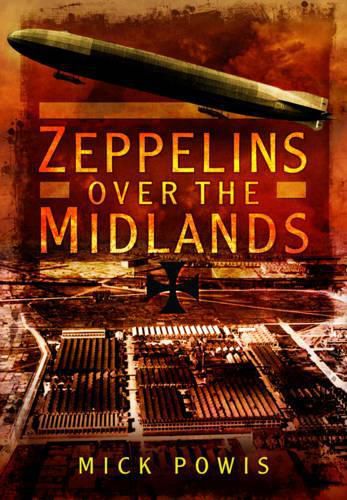Readings Newsletter
Become a Readings Member to make your shopping experience even easier.
Sign in or sign up for free!
You’re not far away from qualifying for FREE standard shipping within Australia
You’ve qualified for FREE standard shipping within Australia
The cart is loading…






On 31st January 1916 nine Zeppelin airships of the Imperial German Navy bombed the Midlands, opening a strategic bombing campaign designed to cripple British war production. It ended in total failure. The main target was Liverpool but none of the Zeppelins reached it. On foggy Monday night several major Midlands towns were bombed and 70 people killed, 35 in the Black Country between Birmingham and Wolverhampton, 15 in Burton on Trent, 10 in Loughborough, 5 in Derby, 3 in Scunthorpe and 2 in Ilkeston.
A lot is known about the military aspects of the raids but much less is known about what happened on the ground. While the press produced many human interest stories and atrocity propaganda, wartime censorship prohibited publication of any information that could be useful to the Germans, including the towns hit and names of the victims. Through intensive research the author has been able to identify many of the victims and give the full story of these events for the first time. AUTHOR: Mick Powis is an experienced researcher who has written historical articles for his local press. 30 illustrations and 3 maps
$9.00 standard shipping within Australia
FREE standard shipping within Australia for orders over $100.00
Express & International shipping calculated at checkout
On 31st January 1916 nine Zeppelin airships of the Imperial German Navy bombed the Midlands, opening a strategic bombing campaign designed to cripple British war production. It ended in total failure. The main target was Liverpool but none of the Zeppelins reached it. On foggy Monday night several major Midlands towns were bombed and 70 people killed, 35 in the Black Country between Birmingham and Wolverhampton, 15 in Burton on Trent, 10 in Loughborough, 5 in Derby, 3 in Scunthorpe and 2 in Ilkeston.
A lot is known about the military aspects of the raids but much less is known about what happened on the ground. While the press produced many human interest stories and atrocity propaganda, wartime censorship prohibited publication of any information that could be useful to the Germans, including the towns hit and names of the victims. Through intensive research the author has been able to identify many of the victims and give the full story of these events for the first time. AUTHOR: Mick Powis is an experienced researcher who has written historical articles for his local press. 30 illustrations and 3 maps